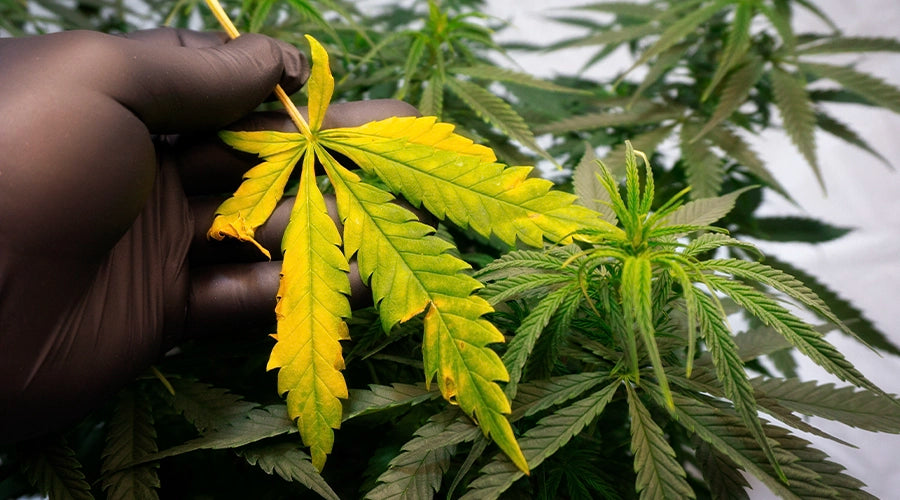
Symptoms of Nutrient Burn in Cannabis Plants
What is Nutrient Burn?
Nutrient burn, also known as "nute burn," is a common problem when growing cannabis. When cannabis plants receive too much fertilizer, they can't absorb all of the nutrients they need, and the excess can build up in the leaves and cause the leaves to turn yellow or brown and become crispy. This is especially true for young plants, which are more sensitive to over-fertilization.
The most common cause of the nutrient burn is the overuse of nitrogen, which is an essential nutrient for plant growth. Cannabis plants need nitrogen during the vegetative stage to promote healthy growth and development, but too much nitrogen can cause the leaves to become yellow and damaged. Other nutrients that can cause nutrient burn include phosphorus and potassium.
Symptoms of Nutrient Burn in Cannabis Plants
Symptoms of nutrient burn can include yellow or brown tips on leaves, leaf curling, and wilting. In severe cases, the leaves may die and fall off. To prevent a nutrient burn, it is important to carefully monitor the levels of nutrients in the soil or hydroponic solution and to follow the recommended dosages for the specific strains of cannabis being grown.

How to fix it? The Best Solution
In case of a nutrient burn, the best solution is to flush the soil or hydroponic solution with plain water to remove any excess nutrients. This can help to reduce the symptoms of nutrient burn and allow the plants to recover. If the nutrient burn is severe, it may be necessary to wait until the next growing cycle to start again.
Overall, nutrient burn is a common problem that can be easily prevented by carefully monitoring the levels of nutrients in the soil or hydroponic solution and adjusting the dosage as needed. By following these guidelines, growers can ensure that their cannabis plants receive the proper nutrition for healthy growth and development.
What do the to Prevent Nutrient Burn?
Nutrient burn is a common problem that can occur when growing cannabis, caused by over-fertilization, using the wrong type of fertilizer.
-
Follow the recommended nutrient dosage: Overfeeding your plants can cause nutrient burn, so it's important to follow the recommended dosage for your specific nutrient brand and the growth stage of your plants.
-
Monitor pH levels: Nutrient uptake can be affected by pH levels, so it's important to monitor the pH of your soil or hydroponic solution regularly. The ideal pH range for cannabis is between 6.0 and 7.0.
-
Water properly: Overwatering can also contribute to nutrient burn, so it's important to water your plants appropriately. Water your plants when the top inch of soil is dry, and avoid letting your plants sit in standing water.
-
Check for signs of nutrient burn: Keep an eye out for symptoms of nutrient burn, such as yellow or brown tips on leaves, stunted growth, or leaf curling. If you notice these symptoms, adjust your nutrient dosage or flush your plants with pH-balanced water.
-
Use high-quality nutrients: Investing in high-quality nutrients can help prevent nutrient burn and ensure your plants receive the right balance of nutrients.
By following these tips, you can prevent nutrient burn in your cannabis plants and promote healthy growth and yield.
